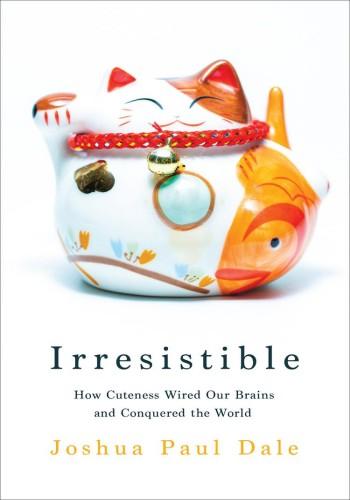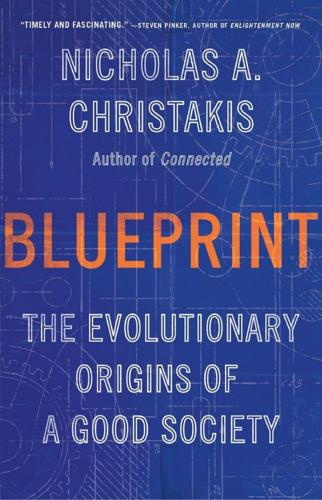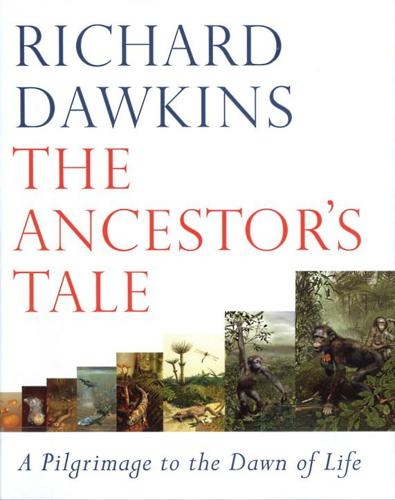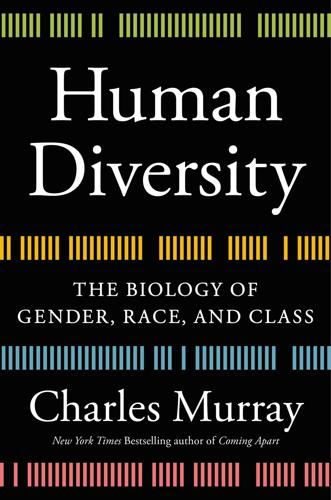
The Goodness Paradox: The Strange Relationship Between Virtue and Violence in Human Evolution
by
Richard Wrangham
Published 29 Jan 2019
Intellectually honest genetics research did not become permissible until several years after Stalin died, in 1953.7 In 1958, Belyaev joined the Institute of Cytology and Genetics of the Siberian Department of the Soviet Academy of Sciences at Novosibirsk. There he was able to keep hundreds of foxes and other animals in captivity and finally to test an idea he had long been drawn to.8 In general, Belyaev was interested in the domestication syndrome, and in particular, in the breeding rate of captive silver foxes, a subspecies of red fox that had been brought over from Prince Edward Island, Canada, in the 1920s. Silver foxes produce an unusual fur color that is a Siberian and worldwide favorite. By the time Belyaev began his research, families in thousands of small rural farms all over the Siberian countryside had been keeping silver foxes for up to eighty fox generations.
…
Elite foxes not only wagged their tails, they even whimpered to attract attention, and they approached the experimenters to sniff and lick them. According to Belyaev’s collaborator Lyudmila Trut, by the tenth generation these elite foxes made up 18 percent of the pups; by the twentieth, 35 percent; and by the thirtieth to thirty-fifth generations, 70 to 80 percent. Within a few years, the American Kennel Club applied to import domesticated silver foxes as pets.13 Impressive as the rate of change in tameness was, what really caught Belyaev’s attention was the appearance of other traits that had not been targeted by the experimenters. By 1969, only ten years after selective breeding began, “a peculiar piebald spotting was first observed in a male fox.”14 In unselected foxes the “piebald spotting,” which Belyaev called a “star mutation,” was rare, but in the selected foxes it was relatively common, including being found “between the ears”—in other words, this was the forehead “blaze” of white often found on horses, or similar white patches commonly seen on cows, dogs, cats, and many other domesticated animals.
…
By 1969, only ten years after selective breeding began, “a peculiar piebald spotting was first observed in a male fox.”14 In unselected foxes the “piebald spotting,” which Belyaev called a “star mutation,” was rare, but in the selected foxes it was relatively common, including being found “between the ears”—in other words, this was the forehead “blaze” of white often found on horses, or similar white patches commonly seen on cows, dogs, cats, and many other domesticated animals. The star mutation had never before been described in silver foxes, but it soon appeared in forty-eight separate families of foxes at the experimental farm. These represented only a minority of the families, but, in keeping with Belyaev’s hypothesis, thirty-five of them included foxes “remarkable in their high degree of tameness.”

Irresistible: How Cuteness Wired our Brains and Conquered the World
by
Joshua Paul Dale
Published 15 Dec 2023
At first I thought this was yet more evidence for the seductive power of cuteness – it seemed that all of these qualities must have arrived in different species through artificial selection, chosen because they were adorable. Then I discovered an astonishing experiment that offers a very different explanation. Far from the Zaō Fox Village, in the Siberian wilderness, scientists breeding a unique population of foxes may have taken a significant step towards solving the mystery of the domestication syndrome. The Siberian silver fox experiment In folklore around the world, foxes are close to humans, yet also distant. They seem capable of being friendly, but never take that first step. This seemingly untapped potential prompted a unique experiment that brings us significantly closer to unravelling the mystery of how companion animals became our friends.
…
Albert et al., ‘Genetic Architecture of Tameness in a Rat Model of Animal Domestication’, Genetics 182 (June 2009), pp. 541–54. 32 Dugatkin and Trut, How to Tame a Fox, p. 77. 33 Ibid., pp. 77–8. 34 Ibid., pp. 107–8. Work is ongoing to pinpoint the exact genes responsible. A recent study found that fox chromosome 15 is a ‘hotspot’ for synaptic plasticity, which affects changes in learning and memory associated with domestication. See Dugatkin, ‘The Silver Fox Domestication Experiment’, p. 2. 35 Dugatkin and Trut, How to Tame a Fox, pp. 133, 154–5. See also Trut et al., ‘Animal Evolution During Domestication’, p. 4. 36 Trut, ‘Early Canid Domestication’, p. 163. 37 Hare and Woods, The Genius of Dogs, p. 91. 3 CUTENESS IN THE WEST Cuteness is part of human biology.
…
Lawrence Convention Center, Pittsburgh 1 Degas, Edgar 1, 2 depression 1 Diamond, Jared 1 Disney 1, 2, 3, 4, 5, 6, 7, 8 Disney, Walt 1, 2 DNA 1, 2, 3, 4, 5, 6, 7 dolls baby shows and 1 Buddhist temples and 1 Children’s Games and 1 clockwork automata 1 cult of Japan and 1, 2, 3 Doll Festival, The (hina matsuri) 1, 2 Kewpie 1, 2 Nakahara and 1 Raggedy Ann 1 saucy sense of humour, American manufacturers and 1 Shirley Temple 1 Sigourney and 1, 2 teddy bears and 1 The Pillow Book and 1 dogs bond with humans 1 burials 1 domestication 1, 2, 3, 4, 5, 6, 7, 8, 9, 10, 11, 12, 13 eyes 1 fox and 1, 2, 3, 4, 5, 6, 7, 8, 9, 10 fur 1 Hachiko 1, 2, 3, 4 Japanese art and 1, 2, 3, 4, 5, 6, 7, 8 lapdogs 1, 2 marginalia and 1 neoteny 1 pet-adoption theory and 1, 2, 3 puppies 1, 2, 3, 4, 5, 6, 7, 8, 9, 10, 11, 12, 13, 14, 15, 16, 17, 18, 19, 20, 21, 22, 23 robot 1, 2 rubbish-dump theory and 1, 2, 3, 4 selective breeding and cuteness in 1 domestication alpha male, myth of 1 bonding and 1 dogs see dogs domestication syndrome 1, 2, 3, 4, 5, 6 ears, floppy and 1, 2, 3, 4, 5, 6, 7 eyes and 1, 2, 3, 4, 5, 6, 7, 8, 9, 10, 11 fox and see fox friendliness gene and 1 fur and 1, 2, 3, 4, 5, 6, 7, 8, 9, 10 gazing, mutual and 1, 2, 3, 4 head shape and 1, 2, 3, 4, 5, 6, 7, 8, 9 head size and 1, 2, 3, 4 instinctual releasing mechanism 1 Island Rule and 1 jaws, shortening of and 1, 2, 3, 4, 5 language and 1 neotony and see neotony neural crest and 1, 2, 3 pet-adoption theory 1, 2, 3 rubbish-dump theory 1, 2, 3, 4 self-domestication hypothesis 1, 2, 3, 4 Siberian silver fox experiment 1, 2, 3, 4, 5, 6, 7, 8, 9, 10, 11, 12, 13, 14, 15 social imprinting and 1, 2, 3 socialisation period 1, 2, 3, 4 teeth and 1, 2, 3, 4, 5, 6, 7, 8, 9 unconscious selection 1, 2 wolves and 1 zebras and 1 Donatello 1 Dugatkin, Lee Alan: How to Tame a Fox (and Build a Dog) 1 ears 1, 2, 3, 4, 5, 6 floppy 1, 2, 3, 4, 5, 6, 7 Edo, Japan 1 See also Tokyo Edo period 1, 2, 3, 4 Emerald City Comic Con 1 emoji 1, 2, 3 Enlightenment 1, 2, 3 Eros 1 Etruscan wolf (Canis etruscus) 1 Europe, development of cuteness in 1, 2, 3, 4, 5, 6, 7, 8, 9, 10 evolution ‘A Biological Homage to Mickey Mouse’ and 1, 2, 3, 4, 5, 6 alpha male, myth of 1 bonding and 1 Darwin and see Darwin, Charles dogs see dogs domestication and see domestication eyes and 1 imprinting and 1, 2, 3 language and 1 Lorenz and 1, 2, 3 March of Progress 1 Neanderthals and 1, 2, 3, 4 neoteny and see neoteny neural crest and see neural crest newborn babies and 1 pet-adoption theory 1, 2, 3 rubbish-dump theory 1, 2, 3, 4 self-domestication hypothesis and 1, 2, 3, 4 socialisation period 1, 2, 3, 4 specialists in non-specialisation 1 wolf see wolf eyes babies and 1 cooperative eye hypothesis 1 domestication and 1, 2, 3, 4, 5, 6, 7, 8, 9, 10, 11, 12 elongated 1, 2 eyebrows 1, 2, 3, 4 eye contact/gazing, mutual 1, 2, 3, 4, 5 ‘Goo-goo’ 1 Lorenz’s child schema and 1, 2 manga and 1 Nakahara and 1 Pikachus 1, 2 position of 1, 2 robot 1, 2, 3 size 1, 2, 3, 4, 5, 6, 7, 8, 9, 10, 11, 12, 13, 14, 15, 16, 17, 18 white sclera 1, 2, 3, 4, 5, 6 Yumeji style and 1 faces temperature of 1 widening of 1, 2, 3, 4, 5, 6 fan, folding 1, 2, 3, 4, 5, 6, 7 fan conventions 1, 2, 3, 4 fancy goods 1, 2 fashion androgynous look and 1, 2 Cutequake and 1 Harajuku style 1, 2 Lolita 1, 2, 3, 4 schoolgirl 1, 2, 3 tribes 1 Felix the Cat 1 fight or flight response 1 Finnish Food Authority 1 First World War (1914–18) 1 flirtation 1, 2, 3, 4, 5 Follen, Eliza Lee: ‘Three Little Kittens’ fox affiliative behaviour/social bonds and 1, 2 burial, earliest fox-human 1 domestication syndrome and 1, 2, 3, 4, 5, 6, 7, 8, 9, 10, 11, 12, 13, 14, 15 facial ‘expression’, cuteness of 1 people and, history of relationship 1, 2 Scroll of Frolicking Animals and 1, 2 Siberian silver fox experiment 1, 2, 3, 4, 5, 6, 7, 8, 9, 10, 11, 12, 13, 14, 15 sly, cunning behaviour 1 Zaō Fox Village 1, 2 Freud, Sigmund 1 friendliness 1, 2, 3, 4, 5, 6, 7, 8 Fujioka, Shizuka 1 fur 1, 2, 3, 4, 5, 6, 7, 8, 9, 10, 11, 12, 13 piebald 1, 2, 3 furries 1, 2, 3 Furscience (International Anthropomorphic Research Project) 1 fursona 1, 2 fursuits 1, 2, 3, 4, 5 Gainsborough, Thomas: Blue Boy 1, 2, 3, 4 Galton, Francis 1 gazing, mutual 1, 2, 3, 4 geese 1, 2 Generative AI 1 genetics, domestication and 1, 2, 3, 4, 5, 6, 7.

Survival of the Friendliest: Understanding Our Origins and Rediscovering Our Common Humanity
by
Brian Hare
and
Vanessa Woods
Published 13 Jul 2020
Xiong, “Red Fox Genome Assembly Identifies Genomic Regions Associated with Tame and Aggressive Behaviours,” Evolution 2, 1479 (2018). 15. E. Shuldiner, I. J. Koch, R. Y. Kartzinel, A. Hogan, L. Brubaker, S. Wanser, D. Stahler, C. D. Wynne, E. A. Ostrander, J. S. Sinsheimer, “Structural Variants in Genes Associated with Human Williams-Beuren Syndrome Underlie Stereotypical Hypersociability in Domestic Dogs,” Science Advances 3 (2017). 16. L. A. Dugatkin, “The Silver Fox Domestication Experiment,” Evolution: Education and Outreach 11, 16 (2018), published online Epub2018/12/07, 10:1186/s12052-018-0090-x. 17. B. Agnvall, J. Bélteky, R. Katajamaa, P. Jensen, “Is Evolution of Domestication Driven by Tameness? A Selective Review with Focus on Chickens,” Applied Animal Behaviour Science (2017). 18.
…
Hansen Wheat, W. van der Bijl, H. Temrin, “Dogs, but Not Wolves, Lose Their Sensitivity Toward Novelty with Age,” Frontiers in Psychology 10, e2001–e2001 (2019). 15. Brian Hare, Vanessa Woods, The Genius of Dogs (Oneworld Publications, 2013). 16. D. Belyaev, I. Plyusnina, L. Trut, “Domestication in the Silver Fox (Vulpes fulvus Desm): Changes in Physiological Boundaries of the Sensitive Period of Primary Socialization,” Applied Animal Behaviour Science 13, 359–70 (1985). 17. Lyudmila Trut, “Early Canid Domestication: The Farm-Fox Experiment; Foxes Bred for Tamability in a 40-year Experiment Exhibit Remarkable Transformations That Suggest an Interplay Between Behavioral Genetics and Development,” American Scientist 87, 160–69 (1999). 18.

Behave: The Biology of Humans at Our Best and Worst
by
Robert M. Sapolsky
Published 1 May 2017
Implicit in this is stasis, a conservatism about evolutionary change—it takes very unique macro changes during times of very unique challenge to luck out. Show us some actual rapid change. A final rebuttal from gradualists was to demand real-time evidence of rapid evolutionary change in species. And plenty exist. One example was wonderful research by the Russian geneticist Dmitry Belyaev, who in the 1950s domesticated Siberian silver foxes.65 He bred captive ones for their willingness to be in proximity to humans, and within thirty-five generations he’d generated tame foxes who’d cuddle in your arms. Pretty punctuated, I’d say. The problem here is that this is artificial rather than natural selection. Interestingly, the opposite has occurred in Moscow, which has a population of thirty thousand feral dogs dating back to the nineteenth century (and where some contemporary dogs have famously mastered riding the Moscow subway system).66 Most Moscow dogs are now descendants of generations of feral dogs, and over that time they have evolved to have a unique pack structure, avoid humans, and no longer wag their tails.

The Greatest Show on Earth: The Evidence for Evolution
by
Richard Dawkins
Published 21 Sep 2009
If wolves were becoming domesticated it was by self-domestication, not deliberate domestication by people. Deliberate domestication came later. We can get an idea of how tameness, or anything else, can be sculpted – naturally or artificially – by looking at a fascinating experiment of modern times, on the domestication of Russian silver foxes for use in the fur trade. It is doubly interesting because of the lessons it teaches us, over and above what Darwin knew, about the domestication process, about the ‘side-effects’ of selective breeding, and about the resemblance, which Darwin well understood, between artificial and natural selection.

The Chaos Machine: The Inside Story of How Social Media Rewired Our Minds and Our World
by
Max Fisher
Published 5 Sep 2022

Humankind: A Hopeful History
by
Rutger Bregman
Published 1 Jun 2020

Against the Grain: A Deep History of the Earliest States
by
James C. Scott
Published 21 Aug 2017
These changes, furthermore, occurred in what was, in evolutionary terms, the blink of an eye. We know this in part by comparing skeletal remains of domesticated animals in Mesopotamia with the remains of their wild cousins and progenitors, as well as by more contemporary experiments in domestication. The now famous Russian experiment in the taming of silver foxes is a striking example. By selecting the least aggressive (most tame) from among 130 silver foxes and breeding them to one another repeatedly, the experimenters produced, in only ten generations, 18 percent of progeny that exhibited extremely tame behavior—whining, wagging their tails, and responding favorably to petting and handling as a domestic dog might.

Blueprint: The Evolutionary Origins of a Good Society
by
Nicholas A. Christakis
Published 26 Mar 2019
Eventually, genes and alleles predisposing humans to make beneficial sorts of social arrangements would arise and expand. This behavior could affect individual survival, not just compared with other individuals but also compared with related species that do not form such networks. Social niche construction would be adaptive. Domestic Bliss In the wild, the silver fox largely conforms to the cultural stereotype of foxes—elusive, cunning, even mean. In captivity, the creature is averse to human contact, and when it does cross paths with a human, it typically results in the human getting a firm bite. But the silver foxes at a farm outside of the Institute of Cytology and Genetics in Siberia yearn for human contact; they lick people’s faces, wag their tails, and whine to be picked up and held.

The Ancestor's Tale: A Pilgrimage to the Dawn of Evolution
by
Richard Dawkins
Published 1 Jan 2004
Unlike modern plant and animal breeders, our forebears of the Agricultural Revolution would not knowingly have practised artificial selection for desirable characteristics. I doubt if they realised that, in order to increase milk yield, you have to mate high-yielding cows with bulls born to other high-yielding cows, and discard the calves of low-yielders. Some idea of the accidental genetic consequences of domestication is given by some interesting Russian work on silver foxes. D. K. Belyaev and his colleagues took captive silver foxes, Vulpes vulpes, and set out systematically to breed for tameness. They succeeded, dramatically. By mating together the tamest individuals of each generation, Belyaev had, within 20 years, produced foxes that behaved like border collies, actively seeking human company and wagging their tails when approached.

Human Diversity: The Biology of Gender, Race, and Class
by
Charles Murray
Published 28 Jan 2020
It’s not just the physiology of animals that can be changed rapidly through breeding. So can fundamental personality traits. A modern experimental example is the Siberian silver fox. In 1959, Soviet biologist Dmitry Belyaev decided to reproduce the evolution of wolves into domesticated dogs.33 Instead of using actual wolves, he obtained Siberian silver foxes from Soviet fur farms and began to breed them for tameness. The foxes were not trained in any way, nor were they selected for anything except specific indicators of tameness as puppies. In the fourth generation, Belyaev produced the first fox puppies that would wag their tails when a human approached.